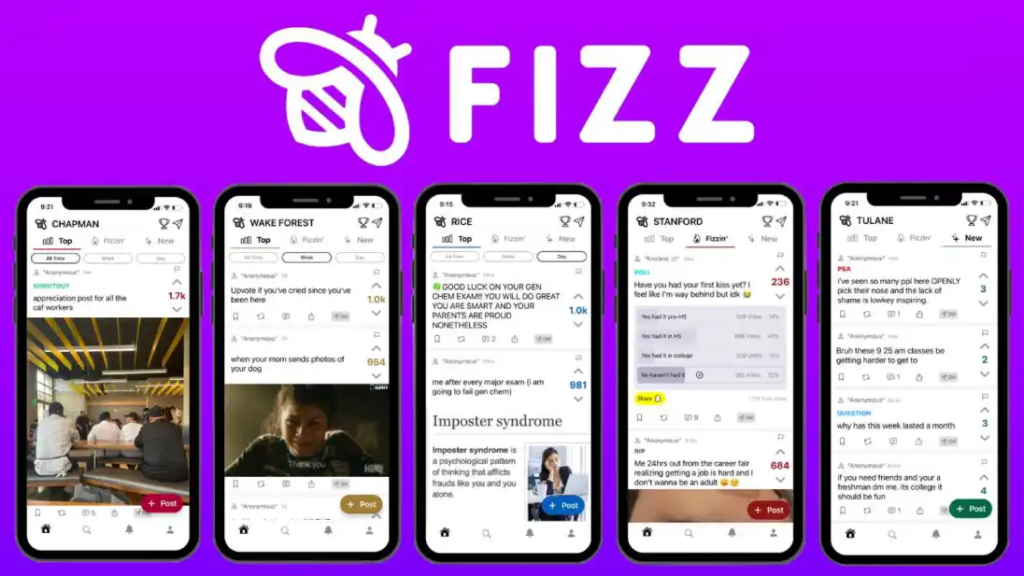Fizz, a fast-growing college social app, is taking major steps to enhance its platform by bringing on David Vasquez, a former TikTok executive, as its new Head of Product. Vasquez, who previously led creator monetization and TikTok Shop, will play a key role in developing Fizz’s recommendation engine, marketplace, and content strategy.
Enhancing Personalization and the Recommendation Engine
One of Vasquez’s primary objectives is to refine Fizz’s recommendation system, ensuring users receive content that aligns with their interests. Drawing from his experience at TikTok, he aims to replicate the highly effective content curation strategies that helped TikTok dominate social media.
“One of TikTok’s greatest strengths is putting the right content in front of the right user at the right time,” Vasquez told TechCrunch. “I want to bring that level of personalization to Fizz.”
Fizz plans to leverage AI-driven insights to analyze user engagement and surface trending content across different topics. This approach will enhance content diversity while ensuring that users receive highly relevant posts. For example, a user frequently engaging with sports discussions will see more related content while still being introduced to new, engaging topics.
Expanding the Fizz Marketplace Beyond Peer-to-Peer Transactions
Vasquez is also focused on expanding Fizz’s peer-to-peer marketplace, applying insights from his time at TikTok Shop. The company is exploring integrated payments and expanding marketplace offerings to include brand partnerships.
“Right now, transactions happen purely via DMs,” Vasquez explained. “We see an opportunity to introduce in-app payments and even integrate e-commerce brands into the platform.”
This shift could transform Fizz into a social-driven commerce hub, allowing users to buy not only from peers but also from established brands. By streamlining transactions and onboarding retailers, Fizz is positioning itself as a Gen Z-friendly shopping destination.
Pushing Further into Video Content
Recognizing Gen Z’s preference for short-form video, Vasquez has already increased Fizz’s maximum video length from 15 seconds to 30 seconds. This simple change has resulted in a 350% surge in video content creation on the platform.
Fizz plans to continue investing in video, potentially extending the maximum duration to one minute in the future. The goal is to make video content more engaging and interactive, ensuring users stay connected and actively contribute to the platform’s growth.
Opening the Platform to Brand Partnerships and Advertising
Fizz is now welcoming brand partnerships, with a growing interest from generative AI companies looking to advertise. As the platform scales, integrating sponsored content and branded campaigns could unlock new revenue streams and further solidify its position in the social media space.
Strong Growth and Competitive Positioning

Fizz is entering 2025 with significant momentum, boasting a 245% increase in daily posts and a 61% rise in daily active users (DAUs) since the start of the year. Vasquez attributes part of this growth to the uncertainty surrounding TikTok’s future in the U.S., a trend that has also benefited platforms like Snapchat.
“With the changing social media landscape, we’re seeing more users looking for authentic, community-driven platforms,” Vasquez noted.
Fizz’s Expanding Reach
Founded in 2021, Fizz is now available at more than 300 colleges and universities, with over 18 million posts on the platform. Backed by $41 million in funding, the company is rapidly evolving from a college-exclusive social app into a next-generation social commerce and content hub.
With Vasquez at the helm of product innovation, Fizz is poised to redefine social media engagement, blending personalization, commerce, and video into a seamless user experience. As the platform scales, it could emerge as a key player in the evolving social media ecosystem.












